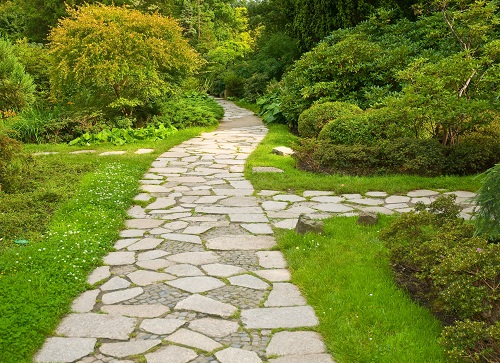
The concept of recycling has moved far beyond just making sure that we put our soda cans and old newspapers into the proper bin before curbside trash pickup. The recycling and repurposing of old construction materials has become increasingly popular as well. Even widespread concrete recycling – something that would have been relatively unheard of just a decade or two ago – is now relatively common.
The Basic Concrete Recycling Process. Concrete generally must be processed before it can be recycled for use in other projects. This may involve crushing the concrete at the demolition site, or taking it to an off site crushing facility or quarry for processing. In any case, in order to be recycled, the concrete must be free of all other materials, including woods and metals.
Much of the concrete recycling happens on a large scale, such as the so-called “riprap” – the large blocks of jagged concrete that you often see lining the shores of lakes, reservoirs, rivers, streams and anywhere else where large-scale erosion is a concern. An increasing number of road projects also use recycled concrete as the base for new surfaces.
Residential Uses. Homeowners looking to reduce their environmental impact can also take part in concrete recycling. In fact, you can use recycled concrete on your property in a number of different ways:
• Not surprisingly, large pieces of reclaimed or recycled concrete can be used to create paths or walkways around your home. Obviously these won’t be perfectly shaped continuous sidewalks – think more in terms of stone path walkways through your garden area or along the side of your home.
• Retaining walls and terraces are also another great way to take part in concrete recycling. You can either use large pieces of recycled concrete, or smaller pieces that are combined into gabions (which are wire cages filled with rocks – as you may have seen as highway embankments and retaining walls).
• Depending on the type of recycled concrete that you have available to you, you may be able to use it in different types of landscaping applications. You’ll need to be sure that the concrete is of an appropriate size and grade, but it can be a great solution for large-scale coverage needs, or as a filler to help you raise your flower or garden beds.
• Certain types of recycled concrete can also be used as a foundation for new concrete applications. These are most often going to be limited to pouring a new foundation (if you’re building a new home) or perhaps re-laying a driveway or sidewalk near your home.
Before you start any new home construction or landscaping project, check with local contractors and materials providers to see if you can use concrete recycling to save money while also saving the environment.

